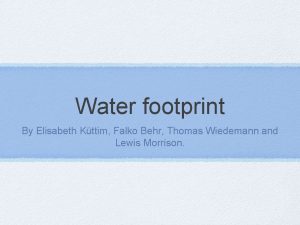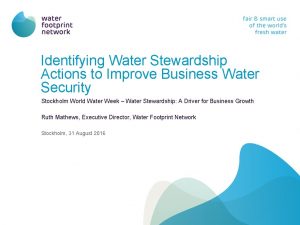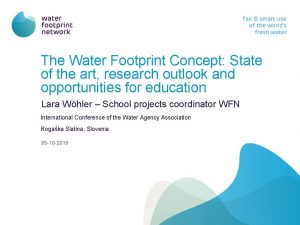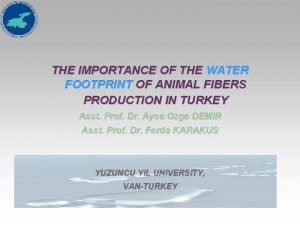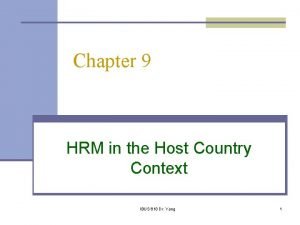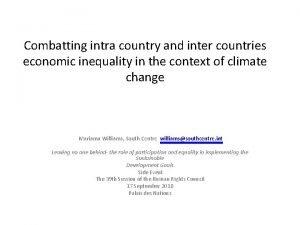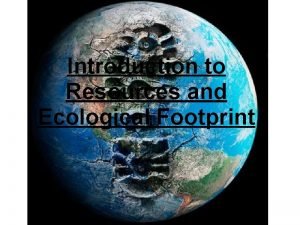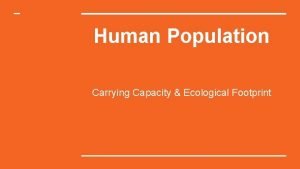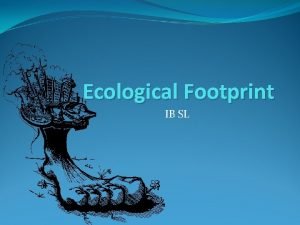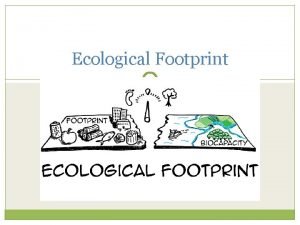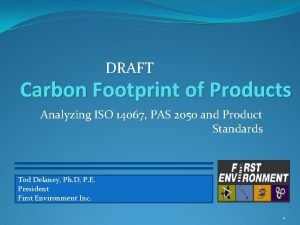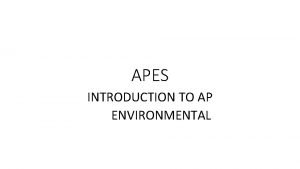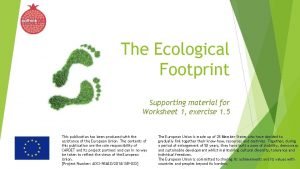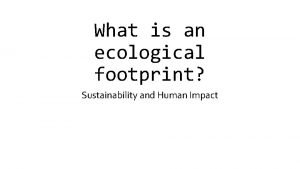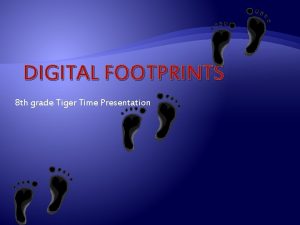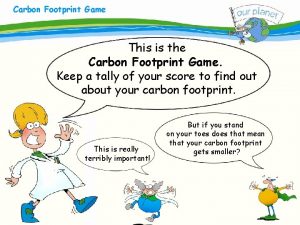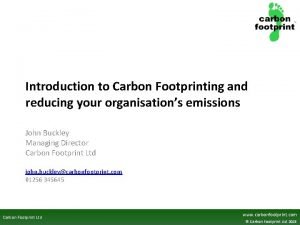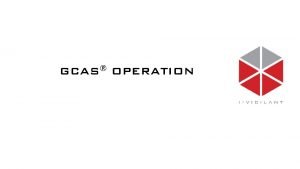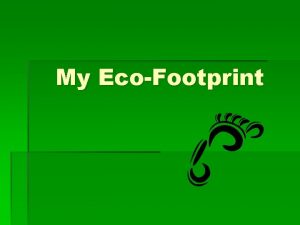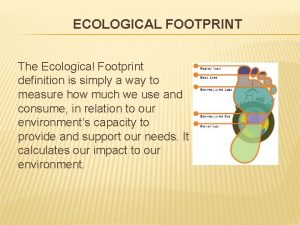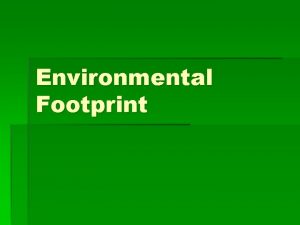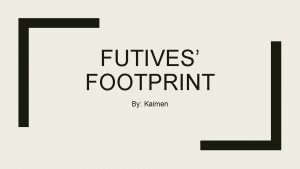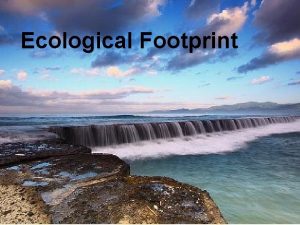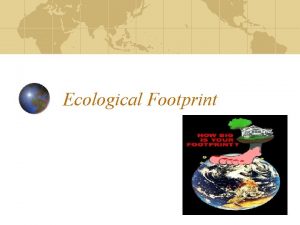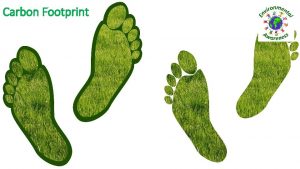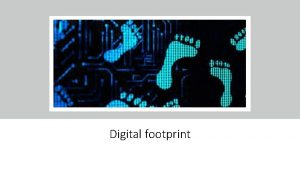Virtual water The water footprint of a country




























- Slides: 28

Virtual water The water footprint of a country is defined as the volume of water used for the production of the goods and services consumed by the inhabitants of the country. Study shows that both Morocco and the Netherlands import more water in virtual form (in the form of water-intensive agricultural commodities) than they export, which makes them dependent on water resources elsewhere in the world. Hoekstra & Chapagain - Ecological Economics (2007) 143– 151.

Coal-fired power plants - Desulphurization of a solid Sulfur in coal is either organic (usually about 60%) or inorganic (about 40%). The inorganic form is iron pyrite (Fe. S 2) which has a higher density than coal. From grinded coal it is removed by elutriation or flotation. The removal of organic sulfur requires a chemical reaction that is accomplished best if the coal is gasified first. Gasified coal is like natural gas. Separation according to decreasing fall velocity Principle of an elutriator

Lake Bourget, summer 2007

Monitoring of biomass development of toxic alga Planktothrix rubescens (a cyanobacteria) in Lake Bourget in 2002 -2003. Source: SACYTOX (2004) Prototype de Système d'alerte pour les proliférations de cyanobactéries toxiques dans les lacs. Rapport Sogreah-Cereve, France.

The methods of iron and manganese removal from water consist of transforming the dissolved forms (Fe 2+ and Mn 2+) by oxidation, into precipitates (Fe(OH)3 and Mn. O 2) followed by filtration. Oxidation can be carried out using powerful chemical oxidants like oxygen, chlorine dioxide, ozone or potassium permanganate.

μg / g PAH contamination of fine particles : Streets and traffic low medium busy street highway

We start from the simple case of a chemostat which is a continuous stirred-tank reactor (CSTR). For the moment we do not consider reinjecting the newly produced biomass, back into the bioreactor, after liquid-solid separation. In that case the biomass budget simply reads:



To reach good nitrification rates, it is necessary to work at a low F/M ratio. The biomass concentration thus needs to be higher than in the conventional process. These requirements have consequences regarding the subsequent sludge manipulation options and disposal routes.


Ammonia stripping • Two-step physical-chemical method • Step 1: Raise p. H to 10. 5 -11. 5 – convert ammonium ions to ammonia gas • Step 2: Air-strip – cascade wastewater countercurrent to air flow – ammonia gas escapes to atmosphere • Pro: less costly, no sludge or Cl by-products • Cons: acids/bases, scale, freezing problems


Continuous Belt Filter Presses designed to work continuously, but apparently suffer from frequent troubleshooting & work interruptions anyway (not an optimal solution). If the purpose is to operate continuously, presumably centrifuge separators would form a better choice.

Hierarchy • Prevention • Quantity • Quality – environmental impact • • Re-use Recycle • Material recovery • Composting – Organical treatment • • • Incineration with energy recovery Incineration without energy recovery Landfilling Mercury-free neon tubes


multiple hearth furnace


Controlled landfill – Class II

Sorting of household waste Dedicated collection vehicles



Recent evolution of the LCV (lower calorific value) of municipal solid wastes accepted at Brussels-Energy combustion plant (kcal / kg) 1996 - 2012 Average Reminder: 9. 0 MJ / kg on this diagram would read 2150 kcal / kg In terms of energy recovery, in the Brussels agglomeration, more and more heat value is presently lost to blue and yellow bags (selective collection of sorted municipal solid wastes) which are not reaching the combustion unit any longer.


Magnet separators

Separation and recovery of Aluminum using magnetic eddy currents After removal of the ferromagnetic metals, other metals such as Aluminum and Copper can be separated as well. Eddy currents arise when there is relative motion between a conductor and a magnet. The illustrated configuration is a rotor generating a magnetic field with alternating polarity. The repelling force created by the eddy currents moves Al and Cu metals away from the conveyor, while all the other (non-electrically conductive) materials simply drop off by gravity at the end of the conveyor.

metallic contamination of the slags, ESP and FGD residues

Environmental monitoring of Brussels-Energy Incinerator (mg/Nm³ dry 11% O 2) SO 2
 Water footprint beer
Water footprint beer Water footprint network
Water footprint network Water art concepts
Water art concepts Water footprint turkey
Water footprint turkey Water and water and water water
Water and water and water water Host country and home country
Host country and home country Intra country vs inter country
Intra country vs inter country Has virtual functions and accessible non-virtual destructor
Has virtual functions and accessible non-virtual destructor Digital footprint examples
Digital footprint examples Digital footprint outline
Digital footprint outline Digital footprint calculator
Digital footprint calculator Ecological footprint example ap human geography
Ecological footprint example ap human geography Islandwood ecological footprint
Islandwood ecological footprint Ecological footprint map
Ecological footprint map Ecological footprint components
Ecological footprint components Iso 14067 carbon footprint of products
Iso 14067 carbon footprint of products Digital footprint impact
Digital footprint impact How can your digital footprint affect you in the future
How can your digital footprint affect you in the future Ecological footprint apes definition
Ecological footprint apes definition Ecological footprint worksheet
Ecological footprint worksheet Jonathan franzen digital footprint
Jonathan franzen digital footprint Calculating ecological footprint involves consideration of
Calculating ecological footprint involves consideration of Whats an ecological footprint
Whats an ecological footprint Understanding your digital footprint
Understanding your digital footprint Digital footprint presentation
Digital footprint presentation Ecological footprint game
Ecological footprint game Internet saftey games
Internet saftey games Trillion dollar footprint answers
Trillion dollar footprint answers John buckley carbon footprint
John buckley carbon footprint
